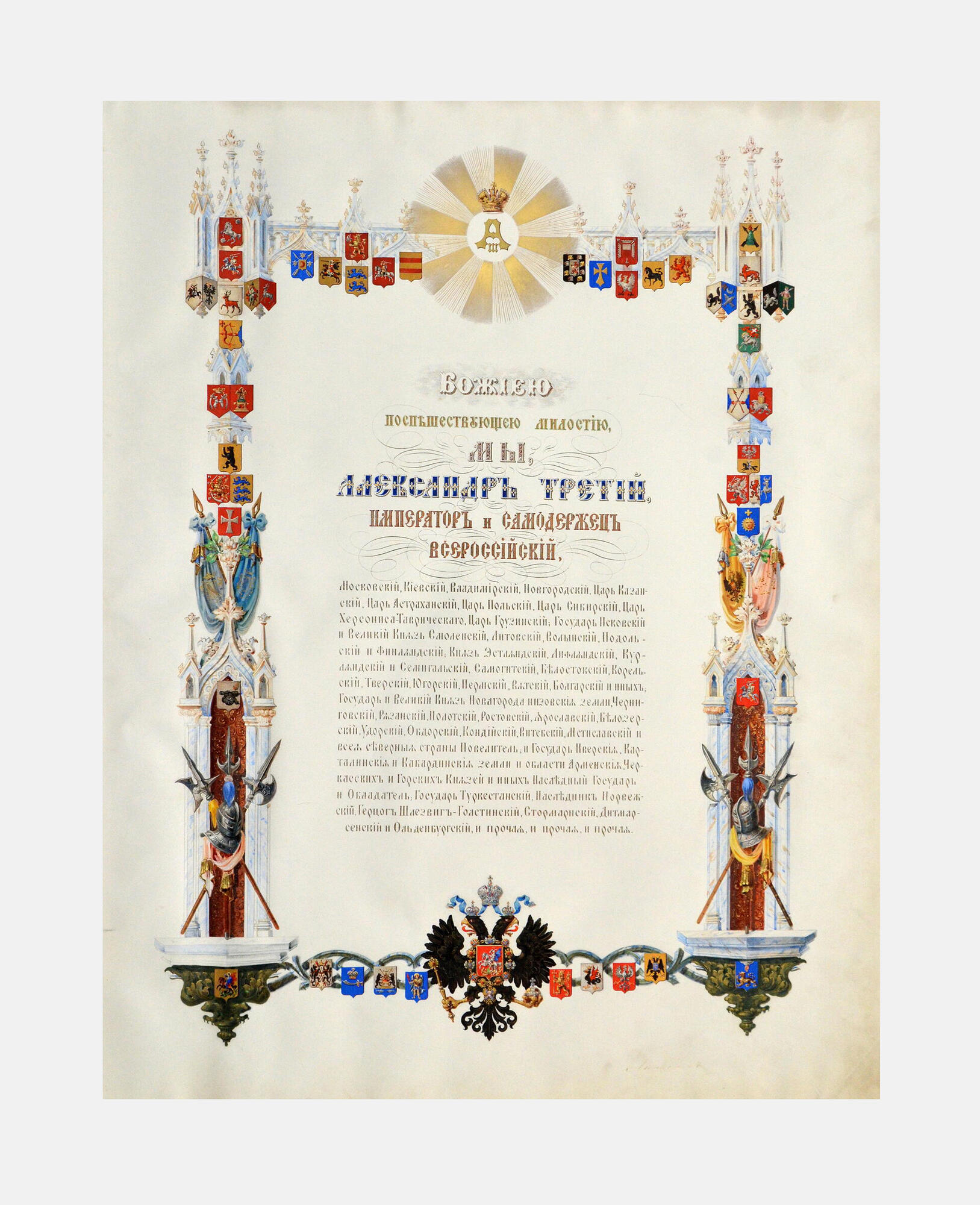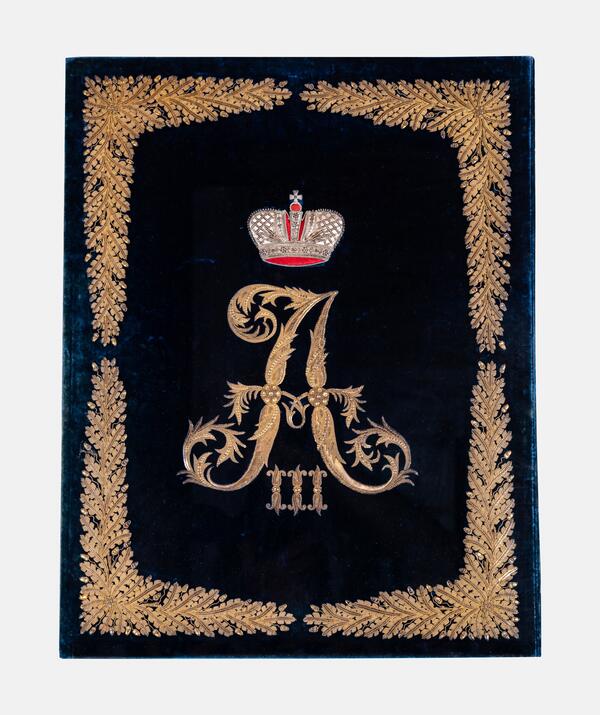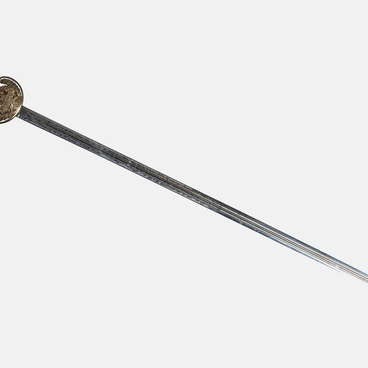The Ulyanovsk Regional Museum of Local Lore named after Ivan Goncharov presents the first page of the patent of the count’s title granted by Alexander III to Lieutenant General Konstantin Ivanovich Razvadovsky, which also assigned the Razvadovsky surname and coat of arms to the Pashchenko family.
The Pashchenko-Razvadovskys were nobles of the Włocławek Uyezd of the Warsaw Governorate and the Slutsky Uyezd of the Minsk Governorate, prominent Polish landowners who served in the Russian military. Konstantin Ivanovich Razvadovsky (1814–1885) was a lieutenant general. In 1867, he became the governor of the city of Warsaw. In 1849, he was appointed commander of the Simbirsk Jaeger Regiment, which took part in the Hungarian campaign. Then Count Razvadovsky became assistant to the chief of the 4th Infantry Division, chairman of the special investigative commission for political affairs in the Kingdom of Poland and general for special assignments under the governor of the Kingdom of Poland, while being governor of Warsaw. His daughter Varvara Konstantinovna Razvadovskaya married Count Major General Vladimir Lvovich Pashchenko (1834–1894), a participant in the Crimean War of 1853–1856 and the Russian-Turkish War of 1877–1878.
Varvara Konstantinovna was Konstantin Razvadovsky’s only child. In 1868, when she married the Life Guards captain Pashchenko, this line of the Razvadovsky family was going to be broken. To prevent this from happening, on July 15, 1871, Alexander II ordered that Pashchenko had the surname of his high-ranking father-in-law added to his own. In 1872, the surname and coat of arms of Count Pashchenko were added to the surname and coat of arms of Razvadovsky, and on June 29, 1872, Konstantin Ivanovich Razvadovsky was allowed to bear the title of count along with his two brothers and his daughter’s husband, Colonel Vladimir Lvovich Pashchenko.
The patent for nobility granting the coats of arms to the Pashchenko-Razvadovskys consists of twelve sheets of printed text, each of them decorated with drawings of the coats of arms of noble families and hand-painted patterns in watercolor. The patent is exhibited along with a dark blue velvet folder, decorated with the coat of arms of the Russian Empire on one side and the monogram of Alexander III encircled with an oak wreath on the other.



